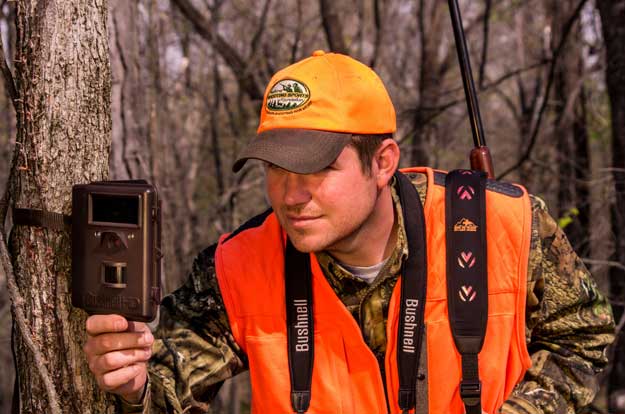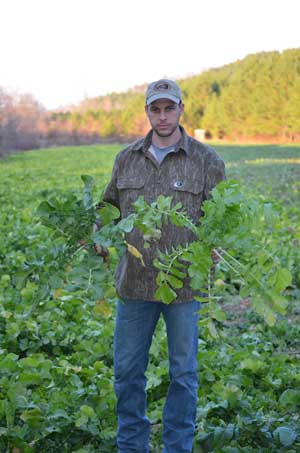Bobby Cole | President, Mossy Oak BioLogic

One of the big problems that many hunters face at this time of the year is not having enough time to put in a proper green field. However, the hunters short on time can often find a farmer in the region where they hunt and pay him to prepare and plant a green field for them. A farmer knows how to plow, plant and fertilize, and because he has the correct equipment, he can likely do it faster and less expensively than you can.
Using trail cameras on your property will give you a very real advantage once you plant green fields. You can survey your deer herd and pick out the individual bucks you want to hunt. By letting young bucks walk, and taking only the older-age-class bucks, you consistently can take bigger bucks every year, depending on your management program, the amount of food you plant and the fertility of the soil.
One of the best management practices that pays off for hunting big deer is not hunting the first week of deer season, if you can control the land where you hunt. If all the neighbors are hunting deer that first week of deer season, and you’re not hunting that week - which is generally when the most hunting pressure occurs - then the property you hunt and the green fields you’ve planted become sanctuaries for bucks. By your club refraining from hunting until the second week of deer season, you’ve allowed your neighbors to push their bucks onto your land where they’ll find sanctuary and food.
 One of the most important decisions a hunter must make about green field planting is what seed blend he should plant. My favorite green field planting is BioLogic’s Green Patch Plus. Forty pounds of this seed blend plants an acre-size green field. For my personal plots, I like to add about one pound of BioLogic’s Deer-Radish seed, a highly nutritious forage connected to a long, sweet, nutrient-packed root that deer love. BioLogic sells Deer-Radish in 2-pound bags, so I can take half of a bag and mix it in with the Green Patch Plus. I’ve found year after year that that mixture makes for a fantastic food plot from the beginning to the end of deer season.
One of the most important decisions a hunter must make about green field planting is what seed blend he should plant. My favorite green field planting is BioLogic’s Green Patch Plus. Forty pounds of this seed blend plants an acre-size green field. For my personal plots, I like to add about one pound of BioLogic’s Deer-Radish seed, a highly nutritious forage connected to a long, sweet, nutrient-packed root that deer love. BioLogic sells Deer-Radish in 2-pound bags, so I can take half of a bag and mix it in with the Green Patch Plus. I’ve found year after year that that mixture makes for a fantastic food plot from the beginning to the end of deer season.
The advantage of adding radishes to Green Patch Plus is that the radishes mature early in the season and attract deer during early bow season. With the brassicas, clovers and other seeds in the Green Patch Plus blend, that mixture produces a great green field all the way into March of the next year.
Depending on whether northern hunters have had a mild or a severe winter, I recommend the possibility of planting Winter Grass Plus, a mixture of clovers and brassicas. Also deer hunters generally will swear about hunting successfully near, under or around acorn trees at the first of bow season. Deer love acorns, especially white oak acorns in much of the South. In Mississippi and Louisiana, deer almost will do back flips if they can find wild pecans.
One factor that many hunters often overlook is that deer are browsers, and according to some estimates feed on a couple hundred different foods. They don’t feed on just one crop all day or all night. Even with the availability of apple and pecan orchards, fruits, forbs and other native foods that deer normally eat, green fields still can attract deer and provide food for them.
Another management tool that’s used very effectively is avoid hunting the green fields until the second or third week of deer season. Most hunters realize that the best time to take a buck may be during the rut when deer are moving more in daylight hours and may be seen in open places where you’d never see them before the rut. By not hunting green fields until the beginning of the rut, those green fields have been providing food and sanctuary for the does all season. Then when the rut kicks in, you’re much more likely to take an older-age-class buck off a green field than if you hunt that green field every weekend during deer season. Another option is to have two or three green fields on the property that no one hunts until the rut starts. Your club’s hunters can hunt the other green fields during the early and the late deer season.




























